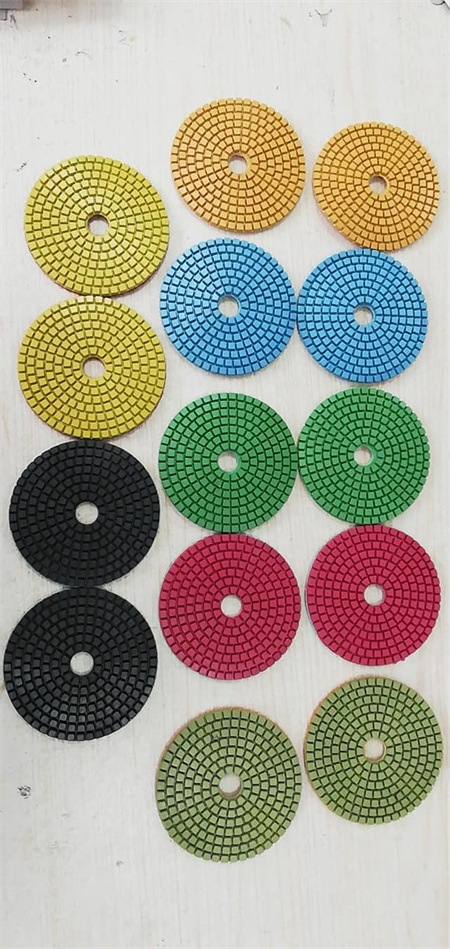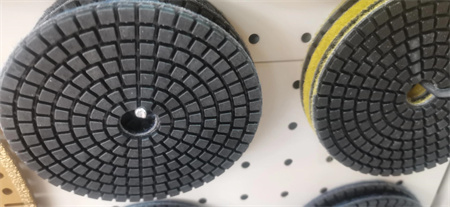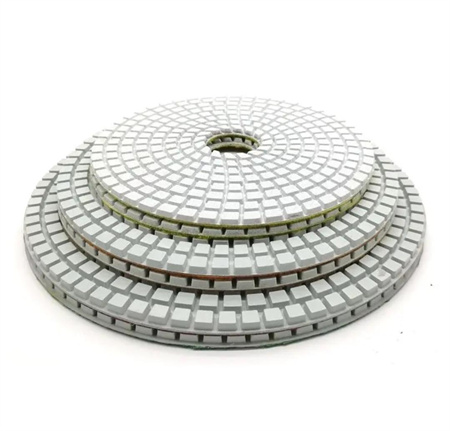How to Achieve the Best Finish with Resin-Bonded Diamond Pads

Resin-bonded diamond pads come in a variety of grit sizes, each designed for a specific part of the polishing process. Coarse grits are typically used to remove rough edges, while finer grits are for achieving that high-gloss finish. The first step to a great result is choosing the right grit for your task. If you’re starting with a surface that’s particularly rough or has visible scratches, you’ll need to begin with a coarser grit—something in the 30 to 50 range. This grit is designed to quickly remove imperfections and prepare the surface for finer polishing. Be patient during this initial phase, as it sets the stage for the entire finish.
Once the surface is smoothed out and the heavy scratches are gone, you can begin moving up through finer grits. It’s crucial to progress gradually—jumping from a low grit to a high grit too quickly can leave undesirable marks or prevent you from achieving the smoothest finish. For a perfect final result, it’s typical to move through grits ranging from 100 to 3000, depending on the desired level of polish.
An often-overlooked but important factor is the speed at which you work. High-speed polishing machines are effective, but they also come with the risk of overheating the surface, especially when working with finer grits. It’s better to use moderate speed during the final stages of polishing. This gives the resin-bonded diamond pads time to work their magic and ensure an even, high-quality finish without risking damage to the surface.
Water is another crucial element in this process. Resin-bonded diamond pads perform best when kept lubricated with a steady flow of water. Water reduces the heat generated during the polishing process and prevents the pads from clogging. It also helps to carry away dust and debris, keeping the pad and surface clean. While it might be tempting to skip this step, doing so can cause the pads to wear unevenly and leave marks on the surface.
Don’t rush through the process either. Taking your time with each grit stage ensures that you’re not just removing imperfections but also allowing the resin-bonded pads to reveal their full potential. The pressure you apply also plays a significant role in the outcome. Too much pressure can cause the pads to wear out too quickly, while too little pressure can prevent them from making the necessary impact on the surface. Find a balance—gentle but consistent pressure is the key to success.
Proper cleaning and maintenance of your resin-bonded diamond pads are essential to ensuring consistent results over time. After each use, rinse the pads thoroughly to remove any buildup of debris or slurry. If the pads are not cleaned, they can become less effective and may even cause damage to the surface you’re working on. Regular maintenance not only extends the life of the pads but also helps maintain their performance, keeping your results sharp and precise.

In conclusion, mastering the use of resin-bonded diamond pads is about more than just having the right tools. It’s about knowing how to handle them to get the results you want. By following the right steps and being mindful of the process, you can achieve a flawless, high-gloss finish on any surface. Whether you’re a professional in the stone or concrete industry or a DIY enthusiast, understanding the nuances of resin-bonded diamond pad polishing will make a world of difference in the quality of your work.
